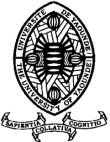KRAS and BRAF Mutations as Prognosis Factors in Breast Cancer
DOI:
https://doi.org/10.5281/hra.v2i2.5265Keywords:
KRAS, BRAF, Mutations, Prognosis factors, Breast cancerAbstract
ABSTRACT
Introduction. Breast cancer is most often linked to genetic factors. The main signaling pathways encountered in this pathology are PIK3/AKT/mTOR and RAS/RAF/MEK/ERK. The latter is much less activated in breast cancer. KRAS and BRAF mutations are less frequent in breast cancer and their real incidence cannot be precisely determined, given the limited and sporadic studies on the subject. This work aimed to show the importance of testing for KRAS and BRAF mutation. From our search, both genes had mostly amplifications than mutations. Methodology. To achieve our goal, we analyzed databases from bioinformatics portals and PubMed and Google Scholar, using Medical Subject Heading terms. Results. The latter were somatic, accounting for 0.7% for KRAS and 0.8% for BRAF. The isoform G12 was the most frequent mutated locus for KRAS and the D594 for BRAF. These mutated D594 have opposite molecular, clinical and prognosis implications. Moreover, these mutations are most often found in triple-negative breast cancers, which are not very common in the general population, but are often found in black women. Furthermore, these mutations are often associated with a good tumor immune microenvironment and a good prognosis and overall survival. Conclusion. BRAF mutations with their association with tumor mutational burden make them a potential target for immune checkpoint inhibitors.
RÉSUMÉ
Introduction. Le cancer du sein est souvent lié à des facteurs génétiques. Les principales voies de signalisation rencontrées sont PIK3/AKT/mTOR et RAS/RAF/MEK/ERK. Cette dernière est beaucoup moins activée. Les mutations de KRAS et BRAF sont moins fréquentes dans le cancer du sein et leur incidence réelle ne peut être déterminée avec précision, étant donné les études limitées et sporadiques. Ce travail avait pour but de montrer l'importance du dépistage des mutations KRAS et BRAF. Méthodologie. Pour atteindre notre objectif, nous avons analysé des bases de données provenant de portails bioinformatiques, de PubMed et de Google Scholar, en utilisant des termes Medical Subject Heading. Résultats. Les deux gènes présentaient davantage d'amplifications que de mutations. Ces dernières étaient somatiques, représentant 0,7 % pour KRAS et 0,8 % pour BRAF. L'isoforme G12 était le locus muté le plus fréquent pour KRAS et le D594 pour BRAF. Ces mutations D594 ont des implications moléculaires, cliniques et pronostiques. Elles sont souvent retrouvées dans le type triple négatif, qui sont l’apanage des femmes noires. En outre, ces mutations sont souvent associées à un bon microenvironnement immunitaire de la tumeur, à un bon pronostic et une bonne survie globale. Conclusion. Les mutations BRAF et leur association avec la charge mutationnelle de la tumeur en font une cible potentielle pour les inhibiteurs de points de contrôle immunitaire.
Downloads
Published
How to Cite
Issue
Section
License
Authors who publish with this journal agree to the following terms:
- Authors retain copyright and grant the journal right of first publication with the work simultaneously licensed under a Creative Commons Attribution License CC BY-NC-ND 4.0 that allows others to share the work with an acknowledgement of the work's authorship and initial publication in this journal.
- Authors are able to enter into separate, additional contractual arrangements for the non-exclusive distribution of the journal's published version of the work (e.g., post it to an institutional repository or publish it in a book), with an acknowledgement of its initial publication in this journal.
- Authors are permitted and encouraged to post their work online (e.g., in institutional repositories or on their website) prior to and during the submission process, as it can lead to productive exchanges, as well as earlier and greater citation of published work










